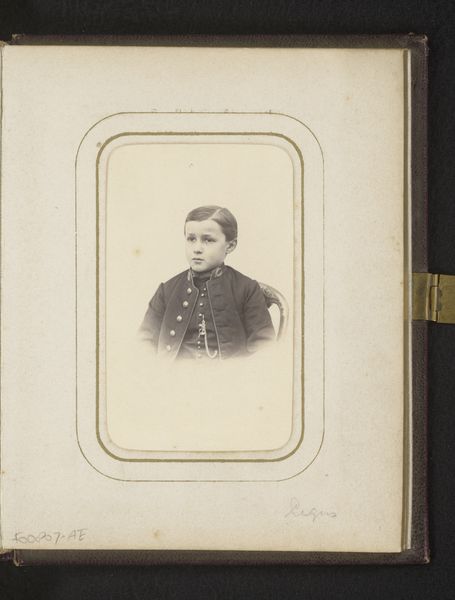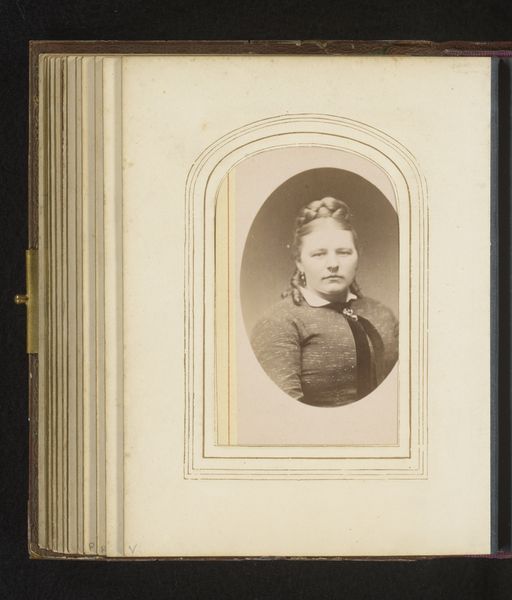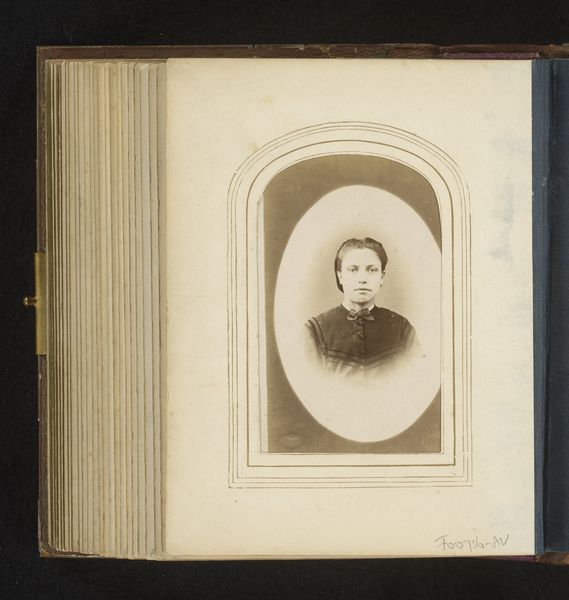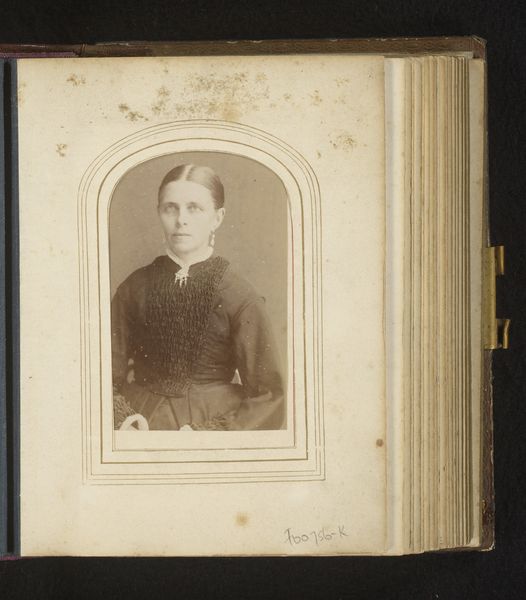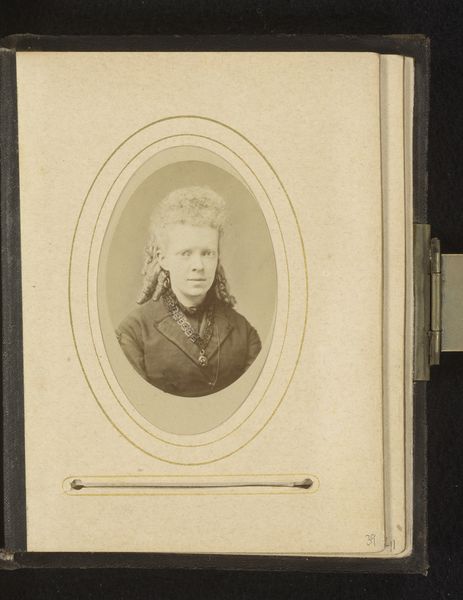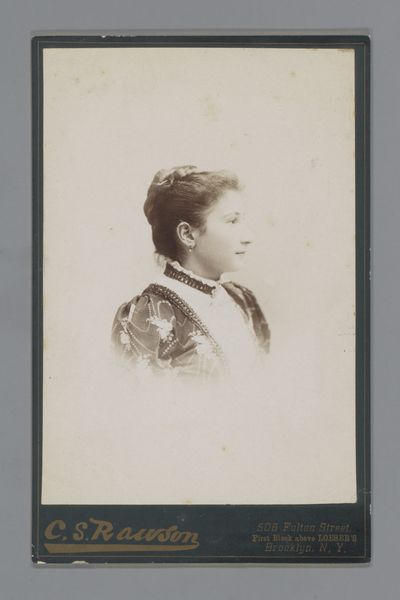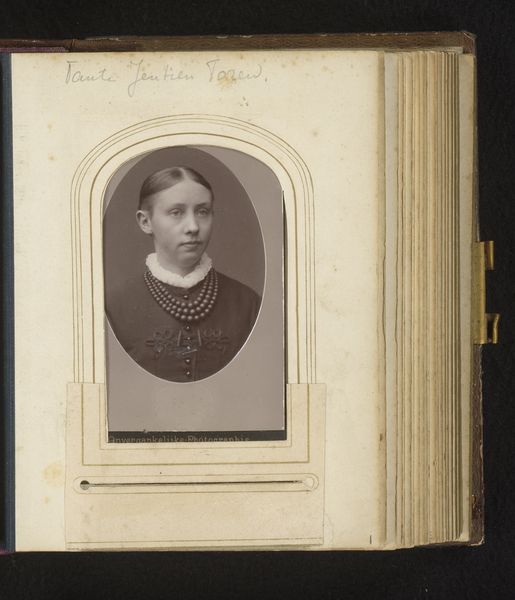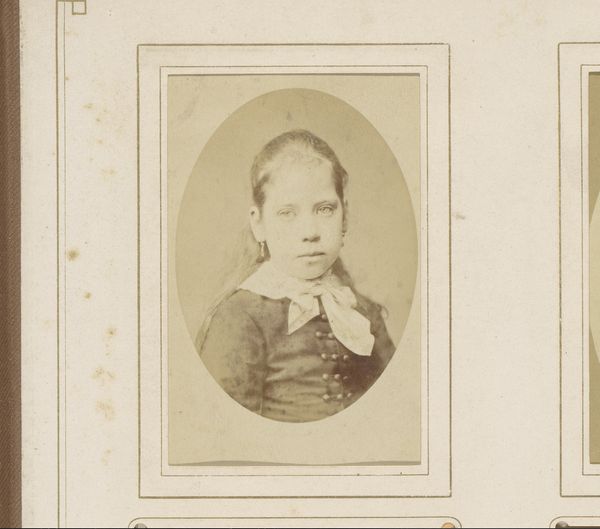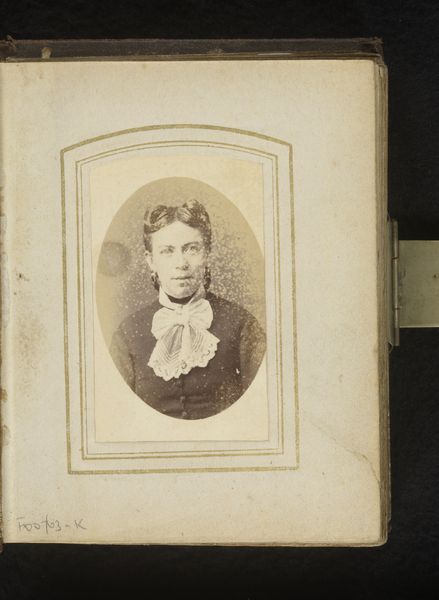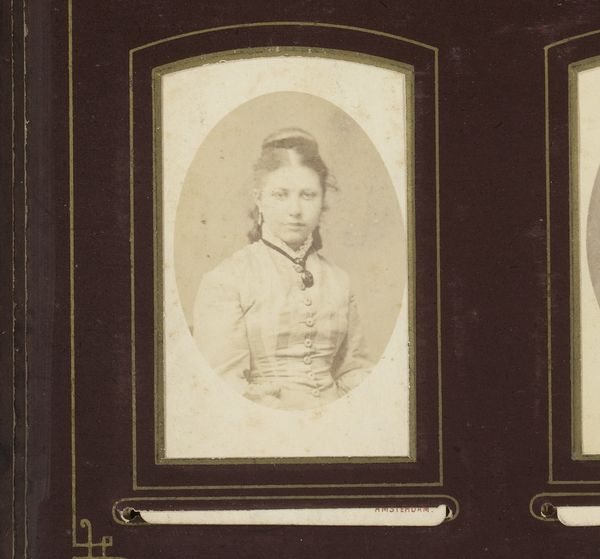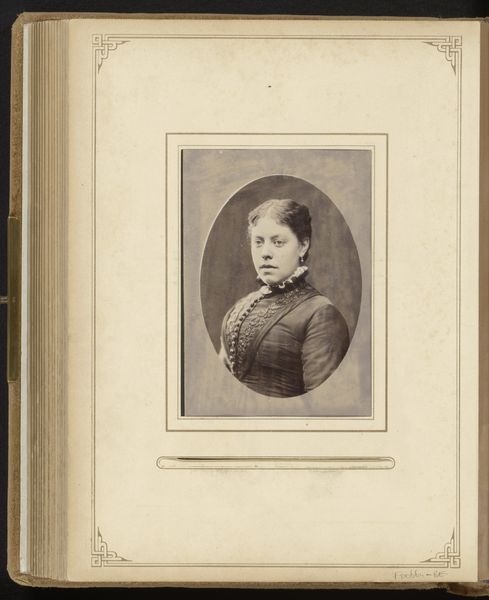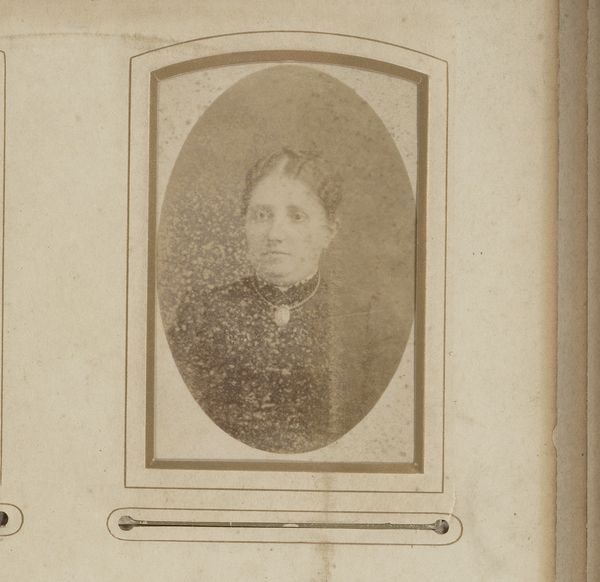
photography, albumen-print
#
portrait
#
aged paper
#
toned paper
#
muted colour palette
#
photography
#
albumen-print
Dimensions: height 86 mm, width 53 mm
Copyright: Rijks Museum: Open Domain
Editor: Here we have "Portret van een jonge vrouw met hoofddeksel" - Portrait of a Young Woman with Head Covering - made sometime between 1868 and 1903, probably by Johannes Gerardus Kramer, using photography, specifically an albumen print. The way the photograph is aged gives it such a melancholic feeling. What's your take on it? Curator: The materiality of this albumen print speaks volumes about the late 19th-century context. Think about the production process: the egg whites used to create the photographic emulsion, the silver salts for sensitivity to light. This wasn't a simple snap; it was a laborious chemical process. Do you think that has social implications? Editor: Definitely! The time and resources needed to create something like this suggest a certain social class could commission such a portrait. Curator: Precisely. It's fascinating to consider the sitter’s attire as a form of material culture. Her head covering, the fabric of her dress—they indicate a particular socio-economic bracket. Even the muted color palette, achieved through the photographic process, reflects the aesthetic preferences, shaped by both technological limitations and societal norms, of the time. Also the practice of carefully housing the photograph is itself a fascinating subject in the means of preservation and display. Editor: It’s interesting to think about how photography, at this time, blurred the lines between artistic representation and documentation, reflecting and reinforcing social structures. Curator: Exactly! And even how it impacts what we think about who had their photo taken versus who didn't, the means to be recorded in this specific, technological fashion. Examining the material conditions and production processes opens up a whole new way of understanding the portrait's meaning. Editor: I see the photograph, and photographs like it, in an entirely new light now. Thank you for sharing your insights! Curator: The pleasure was mine!
Comments
No comments
Be the first to comment and join the conversation on the ultimate creative platform.
